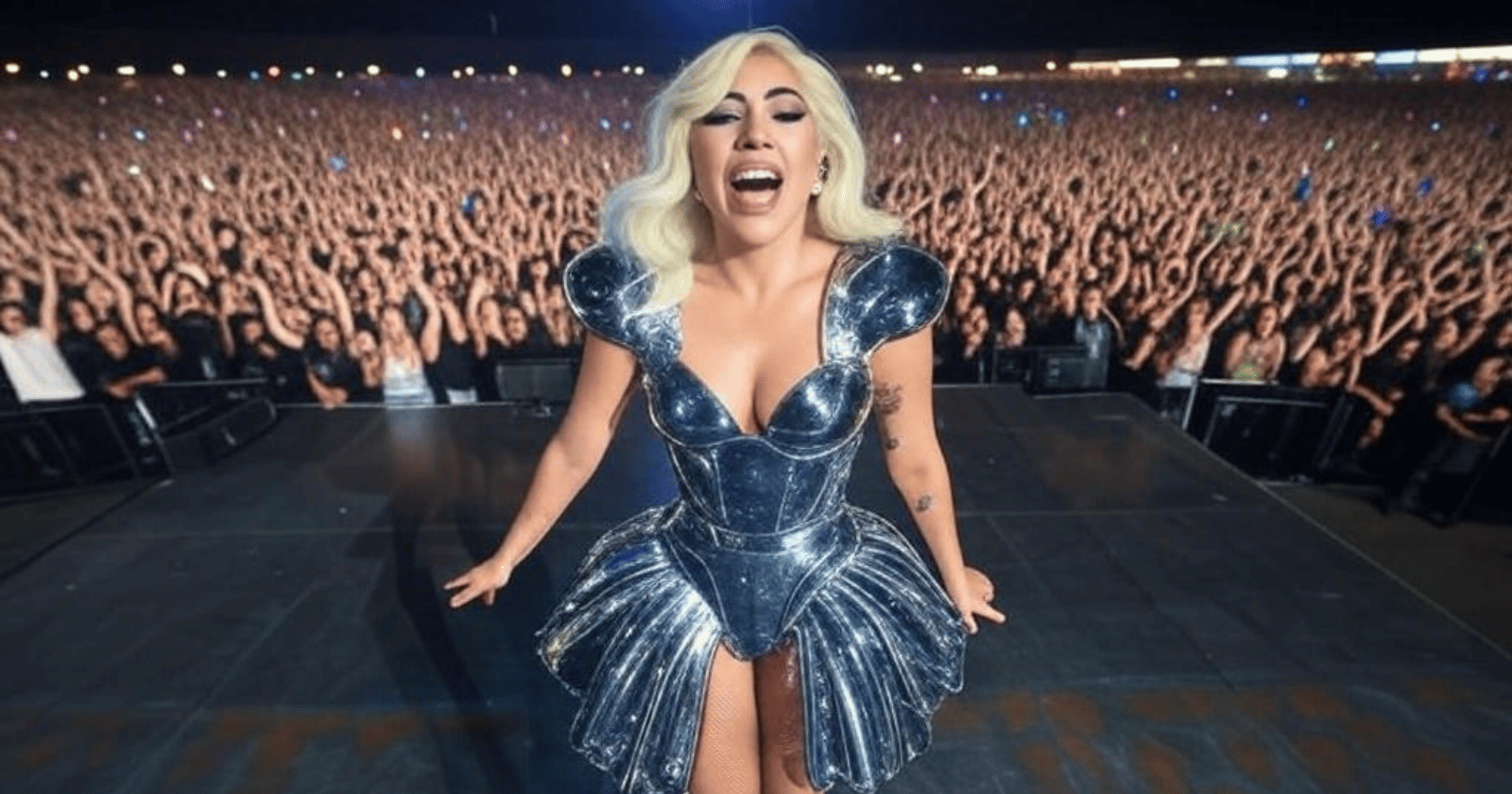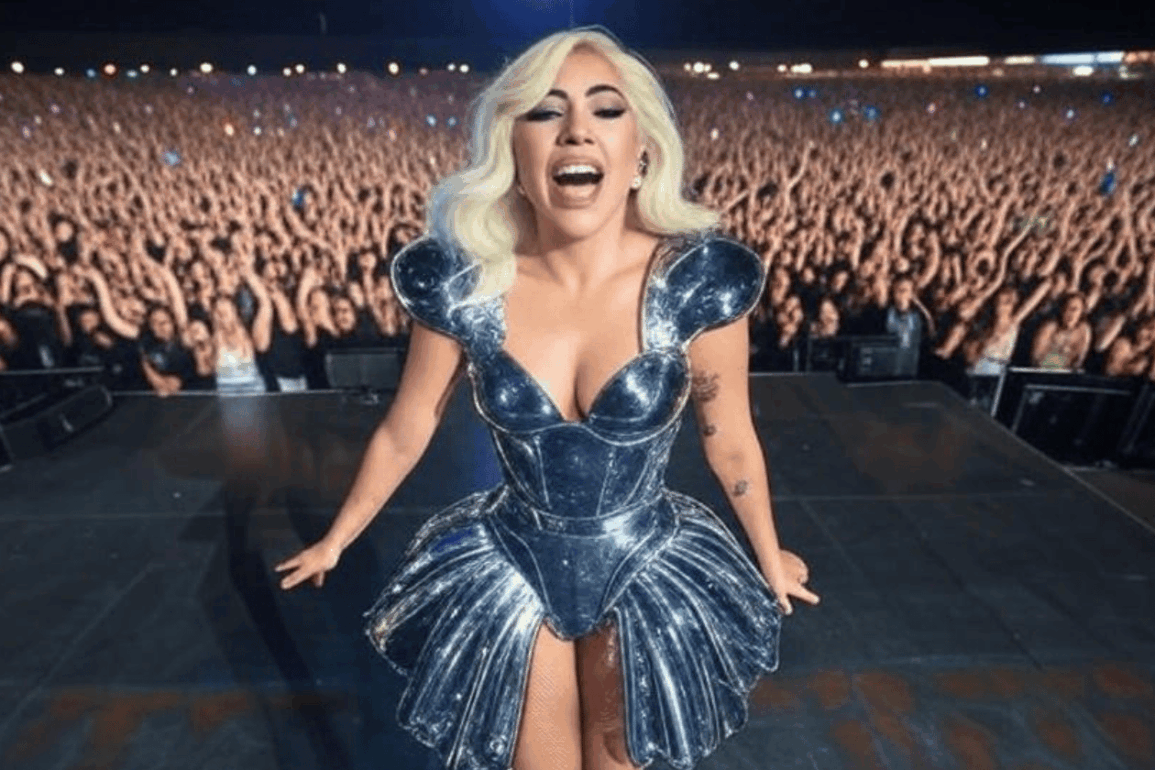
Lady Gaga has achieved a monumental milestone in music history. On May 3, the 39-year-old pop icon performed a free concert on Rio de Janeiro’s famed Copacabana Beach that drew an estimated 2.5 million people – the largest crowd ever for a female artist’s solo show.
That’s nearly the entire population of a major city gathered on one beach to see “Mother Monster” in action. Her devoted fans, known as Little Monsters, turned out in droves for a night that was equal parts spectacle and testament to Gaga’s enduring appeal.
Taking the stage around 10 p.m. local time, Gaga opened with her 2011 deep-cut “Bloody Mary,” a song that recently found new life thanks to viral dance videos on social media. It was a savvy nod to her multi-generational relevance – blending nostalgia for long-time fans with a track trending among Gen-Z listeners.
She wore a striking red ensemble, complete with a massive skirt that concealed a cage of dancers who burst forth as the beat dropped. The beach erupted in cheers.
“Tonight, we’re making history,” Gaga proclaimed to the roaring crowd, later adding, “Thank you for making history with me.” She seemed as awe-struck as anyone by the sea of people. Organizers estimated the crowd at 2.5 million, while some local officials placed it closer to 2.1 million; either figure shatters previous records.
In an emotional post the next day, Gaga tried to capture the feeling: “Nothing could prepare me for the pride and joy I felt singing for the people of Brazil. The sight of the crowd took my breath away… I hope you know how grateful I am to have shared this historical moment with you.”
Gaga revealed that “An estimated 2.5 million people came to see me sing, the biggest crowd for any woman in history,” turning that fact into a motivational note: “If you lose your way, you can find your way back if you believe in yourself and work hard… you can lift yourself up even if it takes some time.” It’s not every day a pop concert ends with life advice on self-belief, but that’s Gaga – part superstar, part motivational sage.
The night was also meaningful given her connection with Brazilian fans. It was her first performance in Brazil in over a decade, and it almost didn’t happen. Authorities later disclosed that they had foiled a planned bomb attack targeting the concert, arresting two suspects who allegedly plotted to harm attendees. Thankfully, the show proceeded safely.
Unaware of the threat at the time, Gaga delivered a powerhouse set of hits – from “Poker Face” and “Alejandro” to the Oscar-winning “Shallow” – maintaining full-throttle energy for over two hours. Fireworks lit up the tropical sky as Gaga belted out her finale, capping a night for the history books.
Surpassing Madonna and other mega-concerts
Lady Gaga’s Copacabana crowd didn’t just break a record – it obliterated it. The previous benchmark for a female artist’s concert attendance was set only a year earlier, when Madonna drew about 1.6 million fans to the same beach in 2024.
That show, billed as the free closing concert of her Celebration Tour, had been heralded as a record-setting triumph for the Queen of Pop. City officials even had to add extra flights into Rio’s airport to accommodate the influx of fans. Yet, just twelve months later, Lady Gaga has overtaken that feat by nearly a million more people.
To give a sense of scale, Gaga’s beach audience was larger than the population of Philadelphia. It roughly doubles the crowd the Rolling Stones drew for their legendary 2006 Copacabana gig (around 1.5 million).
In fact, Gaga’s concert seems to be the second-largest ever recorded, surpassed only by Rod Stewart’s New Year’s Eve performance at the same beach in 1994. That event reportedly drew between 3.5 and 4 million people, recognized by Guinness World Records as the biggest concert crowd in history.
Of course, these astonishing numbers come with an asterisk: they’re free concerts. It’s much easier to draw millions when admission is free and the show is held in a public space. Rio’s government has made a practice of funding such mega-concerts by pop legends to draw tourists and global attention. It works: these events bring a massive economic boost, filling hotels and packing restaurants as fans flood the city.
Yet, free or not, the ability to command an audience of over two million remains rare. Countless free festivals take place worldwide, but only a select few artists have ever seen turnout on this scale. Gaga now joins that elite group, topping every female performer before her and earning a spot among the all-time biggest concert draws.
Why 2.5 million showed up
So, what does it take to draw 2.5 million people to one place for one artist? Lady Gaga’s unique star power and deep connection with her fans are key factors. Over 15 years, she has cultivated a fiercely loyal global following. Her fans, the Little Monsters, don’t just listen; they identify with her messages of self-expression and inclusion. For many, being part of this massive crowd was a shared ritual of belonging.
On stage, she made the crowd participants in the achievement: “Thank you for making history with me,” she said, explicitly sharing the moment with her fans. That acknowledgment transforms every person in the audience into a contributor, not just a bystander. Off stage, she reinforced the sentiment by posting her personal reflections, linking the historical turnout to a message of self-belief.
Another factor in Gaga’s worldwide appeal is her knack for reinvention and relevance. The resurgence of “Bloody Mary” via social media introduced her older work to a new generation. By opening her record-breaking show with a track that had just gone viral, she demonstrated her awareness of current trends and willingness to embrace them.
From an industry standpoint, the collaboration between Gaga and Rio’s government was mutually beneficial. She got to promote new music in front of a once-in-a-lifetime audience and make global headlines, while Rio reaped the rewards of boosted tourism and international exposure. Officials say free beachfront concerts will continue at least through 2028, underscoring how these huge shows serve as both cultural celebrations and economic drivers.
A moment for the ages
In the end, Lady Gaga’s historic Copacabana concert is about more than a jaw-dropping statistic. It’s a story of connection, longevity, and the power of live music. Even in an era defined by streaming and viral digital moments, gathering millions of people in person for a shared experience remains profoundly powerful. Gaga tapped into our longing for collective joy, and in doing so, etched her name into music history alongside legends like Madonna and Rod Stewart.
Imagine 2.5 million fans raising their “paws” in unity on a Brazilian beach. It’s a breathtaking image – and a testament to years of artistry, fan-building, and a touch of savvy showmanship. Lady Gaga will likely never forget this night, and neither will the millions of fans who were there to help make history.
This post was originally published on this site be sure to check out more of their content








